"Jac Thall, of 957 77th Street, Brooklyn, N.Y., a publicity man for theatrical circuit, captured the fourth prize in the dramatic division for his little serio-comedy of the tribulations of a Povery Row movie company. This was called 'A Quickie' and was marked by some unusual amateur acting by Helen Johnson. The photography of Mario D'Giovanni, 45 Garmine Street, New York, was admirable too. 'A Quickie' was shot with a Bell and Howell on 35 milimeter film and was made chiefly on Staten Island." Photoplay, Nov. 1929, 86.
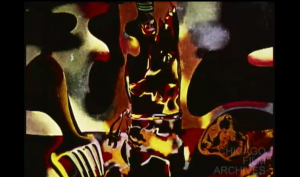
"Abstract Patterns is a two-minute abstract film by Sol Falon of Teaneck, N.J. - a beautiful "shorty" of color and design that is fast moving and stimulating" PSA Journal, Nov. 1969, 56; "A short amateur experimental film featuring mid-century paintings from Pablo Picasso, Wassily Kadinsky, Piet Mondrianand Joan Miro. Disributed by the Society of Amateur Cinematographers (SAC)." Chicago Film Archives
"Kawakita’s Akogare was based on the film footage that he shot on 8mm reversal film at the locations where Gosho Heinosuke was filming his own commercial studio film titled Akogare... his film was not a behind-the-scenes footage of Gosho’s commercial production but rather a stand-alone narrative film that Kawakita himself shot and edited." - Noriko Morisue, "Filming the Everyday: History, Theory, and Aesthetics of Amateur Cinema in Interwar and Wartime Japan" (Yale University: PhD Dissertation, 2020): 158.
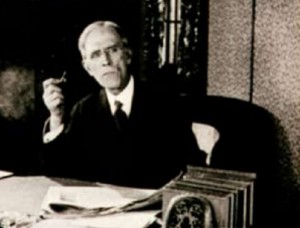
"A family collaboration between Alexander Black and his son Malcolm, this film frames an excerpt from Adolph Zukor's 1919 Paramount Screen Magazine film The evolution of the picture play, made on the twenty-fifth anniversary of Black's first picture play performances, with 1938 Kodachrome footage of Alexander Black addressing the camera and reading a 1919 letter from Zukor affirming Black's status as a cinema pioneer." UC Berkeley Library.
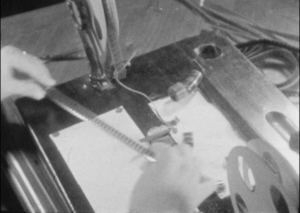
Visual poem, synchronized to the Arabesques of Claude Debussy, that reflects on the home as a space of cinematic creativity for the amateur. It is the only film from the period directly credited to a female amateur filmmaker.
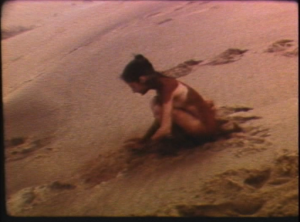
"Arena (Sand, 1986), a soft, grainy projection in which Mexican artist Silvia Gruner, naked, on a beach, climbs a dune, sits, rubs sand and red pigment over her body, and then somersaults all the way down. The video loops, and Gruner repeats her uphill trek again and again. Sisyphean, certainly, and yet her only burden was herself and that looked like freedom" (Brown, 2017)
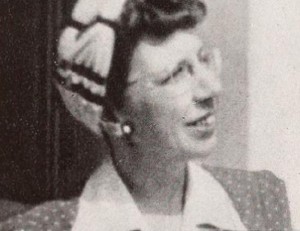
"Behind the Scenes was filmed by Mildred J. Caldwell while the Long Beach Cinema Club was making Fire From the Skies, a civilian defense movie. This production skillfully presents an entertaining record of the problems and the confusion that beset amateur motion picture activities, and it shows how a successful picture can be produced in spite of them." Movie Makers, Dec. 1943, 477.
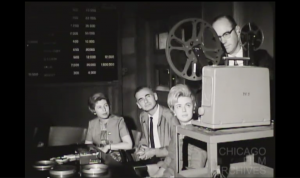
"A silent documentary that follows a group from Central Cinematographers as they view, discuss and shoot films. The process of filmmking becomes transparent as the actors are seen alongside the equipment that lights and films them as well as the large number of people that are needed to prepare for a scene." Chicago Film Archives
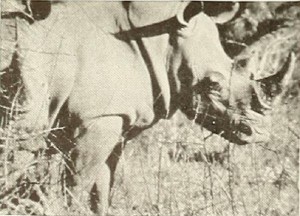
"In the tradition of Carl Akeley and the late Martin Johnson is the humorously titled but essentially serious film, Charlie, the Zulu Game Guard, by Esther and Vincent Vermooten. Stalking rhinos, both black and white, in the Hluhluwe Reserve of British South Africa, Dr. and Mrs. Vermooten, accompanied by the game guard Charlie, managed to capture on film a series of incomparable studies of the beasts in their native habitat. The circumstances must have been difficult, the pursuit undoubtedly dangerous, but Dr. Vermooten used a tripod throughout and succeeded, despite obvious trials of climate and heat, in getting perfect color rendition. This fact, added to the well planned continuity of the film, makes it an outstanding accomplishment of its kind." Movie Makers, Dec. 1940, 602.
"The relatively short photoplay, Choosing a Scenario, has been awarded Honorable Mention because it is a smooth and superficially brilliant example of comedy film story making. Originally produced as one of the entries in a group filming contest conducted by the Cinema Club of San Francisco, the picture took first award in that contest for its director, William Palmer. ACL, its cameraman, K. G. Stephens. ACL, and its lone actor, J. Oliver Tucker, ACL. Although comparatively slight in significance, it offers fine photography, intelligent cutting, effective angles and deft acting in telling a clever story with lively tempo." Movie Makers, Dec. 1935, 551.
Total Pages: 9